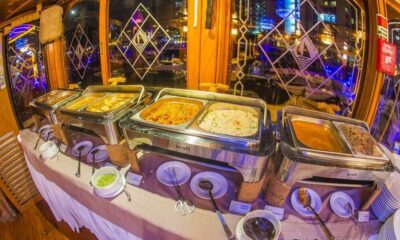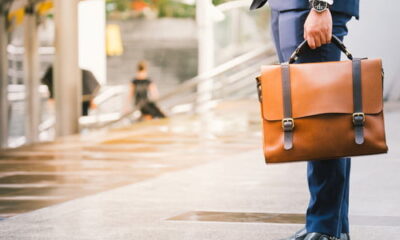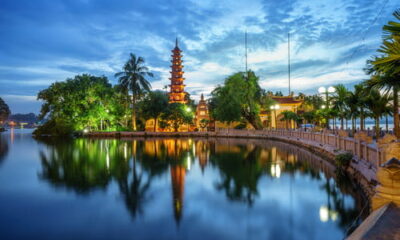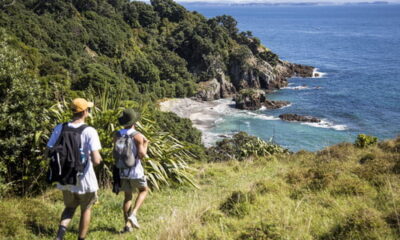Features
Avoid Plane Strain
Forget airport and flight hassles, go continental on a train out of St Pancras suggests Simon Leadbetter.
You just have to love plane travel. There’s the adrenaline-fuelled thrill as the engines roar on take-off and your stomach drops through your boots, and the spectacular mile-high views of our blue green planet. But best is the discomfort of arriving two to three hours before your flight, getting up two hours before any civilised person rises, pointless belt and shoe removing and trudging in long lines through machines that irradiate everything you own, packing no more than 100ml of any liquid in clear plastic bags and ensuring you have neither tweezers nor nail clippers in any cavity. Then there’s the brightly lit shopping mall atmosphere and service station cross-section of society as you wait for your plane, impending thrombosis and, regardless of the class you travel, the mind-numbing, bum-numbing, soul-crushing boredom of the long-haul flight. Let’s face it, plane travel, as a rule, is rubbish.
British Rail commissioned Tony Kaye, then of Saatchi & Saatchi, to create an evocative advertisement called “Relax” featuring a chess-playing passenger, redneck blues and a sepia monochrome. The only reactions it appeared to provoke were bemusement and ridicule. British Rail was certainly not getting there in 1988, with out-of-date rolling stock, a fictional timetable and plastic-tasting food at temperatures that would have put Hiroshima on 6 August 1945 to shame. Train travel, it seems, is also rubbish.
 But what’s this at George Gilbert Scott’s Victorian Gothic temple to the gods of rail travel, St Pancras? I ascend escalators from the undercroft into a true crystal palace under a clear blue sky – William Henry Barlow’s triumph in creating the largest single-span structure of its time. Historically St Pancras was an awful station, dingy and depressing, serving the East Midland cities of Leicester, Nottingham and Derby. What a change the three short years from 2004 to 2007 and a small investment of £800m can make (only £480m over budget)?
But what’s this at George Gilbert Scott’s Victorian Gothic temple to the gods of rail travel, St Pancras? I ascend escalators from the undercroft into a true crystal palace under a clear blue sky – William Henry Barlow’s triumph in creating the largest single-span structure of its time. Historically St Pancras was an awful station, dingy and depressing, serving the East Midland cities of Leicester, Nottingham and Derby. What a change the three short years from 2004 to 2007 and a small investment of £800m can make (only £480m over budget)?
For those interested in this sort of thing, Saint Pancras was an early Roman convert to Christianity beheaded for his faith at the age of 14 in AD 304. He lent his name to one of the oldest sites of Christian worship in England, St Pancras Old Church on Pancras Road in Camden, which in turn lent its name to the surrounding area and international railway station. If you want to venerate Saint Pancras you do it on 12 May and you can invoke him against cramp and headaches. Worth considering when you’re stuck on a cramped Ryanair plane at 36,000 feet in a metal tube and outside temperatures of -36°.
St Pancras, the station not the man, was completed in 1868 and the now-famous hotel, used as a backdrop to Ian McKellen’s Richard III and as King’s Cross in the first Harry Potter, was opened in 1873 but both suffered much reduced usage from the grouping of private companies before WWII, significant and unrepaired bombing during it, nationalisation reducing demand further and subsequent privatisation. Largely redundant by the 1960s Sir John Betjeman led a successful campaign to prevent its demolition, which would have been a national disgrace. Just look at Euston. It was as the Channel Tunnel developed that the idea of using St Pancras as the London terminus was first mooted by Michael Heseltine, before being rejected by John MacGregor in favour of Waterloo. It re-emerged only in the late 1990s in the final days of Major’s Government. You can say thank you to Sir John on the upper concourse near the escalators.
It was in this cavernous setting that my family and I sipped champagne at the eponymous bar before ambling to the Eurostar check-in, were whisked through a straightforward and rapid security process and then relaxed, sipping coffee and nibbling croissants as we waited for our train – all in the space of 30 minutes. After we boarded the comfort of Business Premier we were whisked passed the Olympic Village in Stratford, gradually accelerating to speeds of 140mph through a sun-dappled Kent countryside. A perfectly acceptable La Baume Chardonnay accompanied a superb lamb tagine for me while Mrs L. enjoyed a trout soufflé with crayfish sauce and tail.
As the English countryside retreated and the French countryside arrived we relaxed, racing towards and beyond Lille, Paris, Le Creusot, Valence and arriving in Avignon some six hours later. Six hours might sound a long time but we did the maths – the difference wasn’t much more than flying and we had none of the hassle or discomfort. Rather than being an unloved bookend to the holiday, our train journey became a hugely enjoyed part of it, with freedom to walk around, excellent food and great views.
A train journey creates just over a quarter of the carbon emissions of an equivalent plane journey. Train travel isn’t just getting there. It seems to have arrived.


 Environment10 months ago
Environment10 months agoAre Polymer Banknotes: an Eco-Friendly Trend or a Groundswell?

 Environment12 months ago
Environment12 months agoEco-Friendly Home Improvements: Top 7 Upgrades for 2025

 Features9 months ago
Features9 months agoEco-Friendly Cryptocurrencies: Sustainable Investment Choices

 Features10 months ago
Features10 months agoEco-Friendly Crypto Traders Must Find the Right Exchange





























